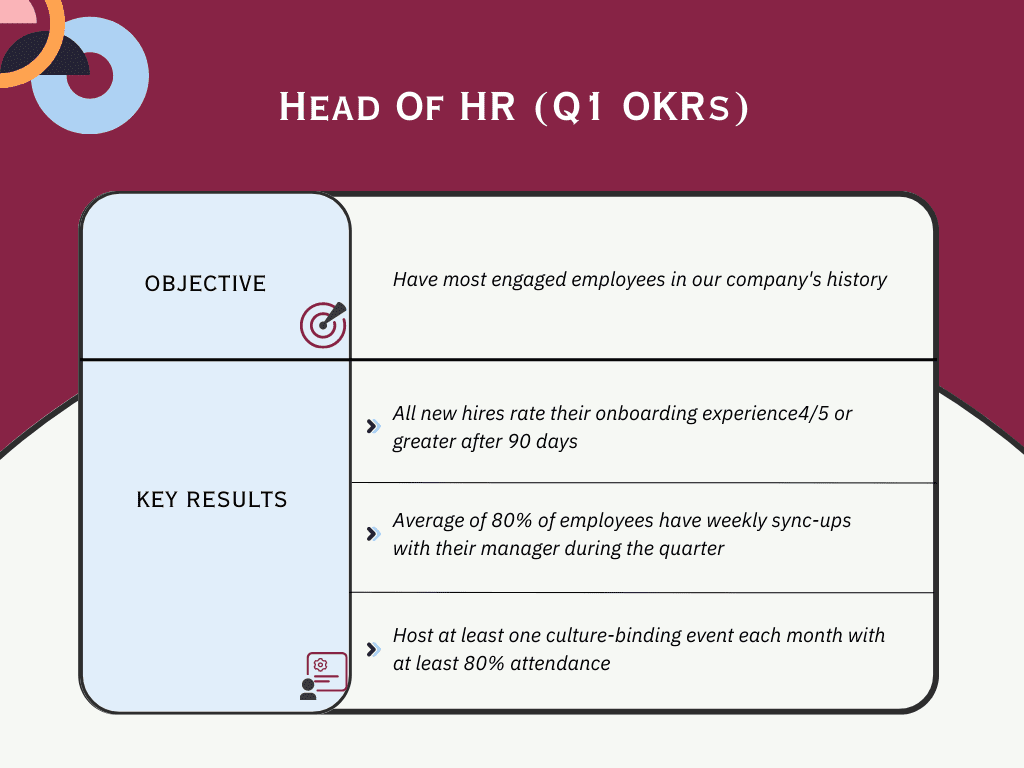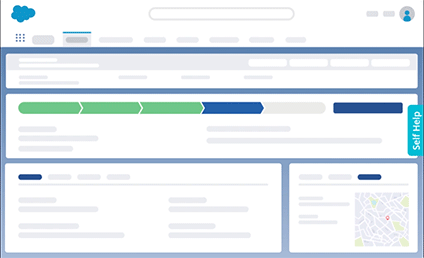

Levi Olmstead


Your employees drive your business’s success. It’s important to recognize strong performance, as well as benchmark and improve underperformers.
But how do you know which team members are exceeding and which need additional support?
Evaluating and measuring employee performance makes sure your employees are efficiently performing and alerts you to those who aren’t working at the levels they should be.
This article explores the importance of measuring employee performance, breaks down different team member evaluation methods, and defines key metrics to evaluate employee performance.
Employee performance is the level of effectiveness, efficiency, productivity, and quality of work by an individual team member within an organization. It encompasses how well employees fulfill their job responsibilities, achieve set goals and objectives, and contribute to the overall success of the organization.
Employee performance is not solely based on quantitative metrics. It also includes qualitative factors such as communication skills, teamwork, problem-solving abilities, and adaptability.
Measuring your employees’ performance doesn’t need to be difficult. Many managers assume that in order to track and evaluate performance they need to use employee performance tracking software or implement advanced analytic systems. However, that’s not true.
Here are six simple strategies to help you measure your employee’s performance.
Setting measurable OKRs (objectives and key results) for your employees is a great way to keep them motivated and moving forward, as well as defining the most crucial milestones and outcomes expected of them in a given time period.
Breaking down big objectives into smaller, measurable actions (key results) that lead to achieving a desired result in a methodical way to enable employees to reach their goals.

For example, let’s say an employee wants to obtain a new training certificate at the end of the month. It can be broken up into objectives that will help them meet objectives, with minor key results and goals such as needing to study for at least 1 hour a day and seeking tutoring help from an expert. Notice, the specific nature of the tasks leaves little room for confusion.
Successfully completing the smaller tasks lead to a greater chance of achieving the overall objective, and provide a measurable way for the employer to track progress or see where deviations might have led to not achieving it.
OKRs help your employees set clear objectives, prioritize effectively, stay focused and accountable, and grow as individuals (both personally and professionally).
The sprint methodology is used by many marketing and product teamsto help employees work more effectively together, through a mutual understanding of time pressure. It helps employees reflect on their working processes and make adjustments and improvements.
During a sprint, employees are assigned work that needs to be completed within a set amount of time (5 days is common). This greatly increases motivation as employees are working against the clock, and have the opportunity of rising to the challenge over time-paralysis or leaving it to the last minute. Employees understand what they need to accomplish each week, and it’s left to them to divide and conquer their weeks.
At the end of the sprint, employees look back at what they have accomplished, analyze what worked and what didn’t, and develop better ways to work in the future.
Navigating the great resignation, new working conditions, and the blurring of work-life balance through remote work, it’s safe to say that COVID-19 has put strain on managing employee relationships. Many organizations have made the move to a hybrid working approach, and are still learning how to measure employee performance in a hybrid workplace.
Investing in a project or task management tool is an effective way to help your team members stay on track. Tools such as Asana, Airtable, Basecamp, and MS Project enable team members and managers to stay on top of deadlines, maintain effective workflow, share status updates with team members, and avoid feeling overworked.
Remote work tools are an excellent solution to monitor performance, reduce stress, and avoid burnout- which has been at an all-time high over the last couple of years.
“When you have too much to do, it can become difficult to prioritize and deprioritize various tasks. Inattention can cause additional problems at work if you simply don’t have the time or energy to complete important projects. Over time, these behavioral patterns can increase your workload even further, causing you to spiral into a state of exhaustion.” says Kayla Gill, Content Director at LuxuryRehabs.com.
In order for your organization to succeed, your employees need to grow and develop through employee training programs. With new online learning courses, organizations can implement training strategies to upskill their workforce, which is critical to keep up with the pace of digital transformation.
Measuring employee training effectiveness allows you to analyze the progress of your employees as they learn and develop. It helps you create a company culture of learning and development that will ultimately further the success of your business.

For managers, sometimes it’s difficult to understand the skill set and expertise of their team members. Teams often are tasked with multiple tasks, consisting of various processes and digital tools.
To help understand where your employee’s skill sets are in different areas of their day-to-day, conduct a skills gap analysis. A skills gap analysis allows managers and HR teams to understand the level of expertise each individual employee has in different areas of their core job functions.

These skills gap analysis tests can be carried out via a simple online survey or exam, and will help identify:
With this information, you can then support your team members who are falling behind with additional training by creating an employee development plan to further their personal and professional growth.
✓ Thank you, the template will be sent to your email
Employees rely on software and digital workflows to do their jobs efficiently in the modern digital workplace.
In our recent Digital Adoption Trends Report, 93% of employees said that at least three software applications were critical to their day-to-day responsibilities, and 50% said they used at least six applications every day.
Organizations must enable their workforce with the contextual guidance, training, and end-user support to empower employees to get the most out of these software applications. This could include upskilling training, in-app guidance, and self-help user support.
Enterprises must also track, benchmark, and analyze their digital software experiences, such as how their technology investments (think CRM, ERP, HCM) is being used and adopted, how contextual tasks and workflows are being engaged with, if new processes are being adopted, to map the most efficient users flows, and to identify dropoff areas inside their applications.
As you can see, there are many ways to measure your employees’ performance. The most important thing to remember is that while everyone is different, the common goal should be the same.
A fair, level playground for performance measurement is essential, and you should implement the system that you and they understand and agree upon. If either side isn’t tuned in and motivated, it’s doomed to eventual dissatisfaction, lack of motivation, or project failure.
Whilst the above are some of the more common methods used, you could take aspects of each to create your own employee performance measurements, using intuitive insights and data.
Listening to the feedback provided by employees is very important, allowing you to curate the system that best fits your organization. This allows you to gain insight into their work performance and efforts, according to those they work with on a daily basis.
You could also ask your employee to carry out a self-evaluation. Typically, this is done in the form of a survey and requires multiple-choice answers. You can then compare the results of their survey with your own findings and highlight any similarities or differences. This can serve as a good talking point and can help you both find a suitable way forward.
Here are ten metrics that empower managers to evaluate their employee’s performance levels.
Evaluating an employee’s performance through 360 reviews involves collecting feedback from various sources, including supervisors, peers, subordinates, and even external stakeholders. Working closely together every day, this is one of the most effective ways to gather qualitative performance data and feedback.

A 360 review evaluates employee effectiveness, contributions, productivity, and behavior at work. There are few closer insights to fully understanding the contribution an employee is making to your organization than from those who are actually doing it.
Evaluating an employee’s performance through Net Promoter Score (NPS) involves gathering feedback from colleagues or stakeholders to measure their willingness to recommend the employee as a coworker or service provider.
To implement this approach, create a survey asking the NPS question: “On a scale of 0 to 10, how likely are you to recommend [employee’s name] to others?”
Responses are then categorized into three groups: Promoters (9-10), Passives (7-8), and Detractors (0-6). The NPS is calculated by subtracting the percentage of Detractors from the percentage of Promoters.
A high NPS indicates strong performance and positive impact, while a low score may highlight areas for improvement. Using NPS in performance evaluation fosters a culture of feedback, encourages continuous growth, and provides valuable insights into employee relationships and team effectiveness in the workplace.
If you are setting goals for your employees, you need to know if they are on track to hit them. If employees are not hitting what has been mutually deemed as achievable, action is required.
Tracking KPIs and OKRs provide unbiased opportunities for discussion – positive or negative. This data can provide valuable insight into the efforts your employees are making and will help you understand which employees are high-performers, and which ones are in need of support or intervention.
The best way to get a true insight into an employee’s performance is to directly ask the opinions of those closest to them. Naturally, this has to be handled carefully and in a professional manner, but in a fair and level way that can provide a deeper understanding for everyone.
Gathering qualitative feedback from other colleagues, peers, and even customers can provide valuable insight into the effort your employee is putting in when you are in the office and when you aren’t.
Are your employees missing deadlines? Do they forget to call clients or are unprepared for meetings?
Maybe it’s the opposite and they’re always early, well prepared, and methodical in their approach.
Every employee has their strengths and weaknesses, and as a manager, it can be hard to separate bias from the reality of their actual performance.
Using an employee productivity tracking tool, organizations are able to log the completion of assigned tasks and monitor productivity levels to understand what percentage of their tasks are being completed. Allowing data to decide is the most fair and most unbiased way to analyze performance.
The 9-box grid method is an individual assessment model, allowing managers and leadership to understand their team member’s current performance against their growth potential.
The vertical columns of the grid show what kind of growth potential an employee has, while the horizontal lines indicate what level an employee is performing at.

Using data from the 9-box grid method you can evaluate whether an employee is underperforming, performing at a satisfactory level, or exceeding your expectations. This simple breakdown of performance highlights areas for praise or improvement and provides an unbiased basis review.
Employees can’t do their job in 2024 without multiple software applications. Consider the multiple applications sales teams use when closing a deal – a CRM for deal tracking and customer communication, an email tracking tool for sending cold emails and measuring opening rates, an e-signature tool for signing contracts, among others.
Organizations must build a strategy to measure digital adoption across core enterprise applications to derive ROI from these technologies and drive employee performance.
CIOs and IT teams can look at metrics such as:


According to Alex Ponomarev on Medium, “it’s not the quantity of work that brings value, it’s the quality. You know, some managers judge the quality of development work by the number of lines of code written. This is insane. It’s like judging the quality of a writer by the number of words written. Or a doctor by the number of IV infusions made. It’s just the wrong metric.”
To measure the quality of an employee’s work, you need to understand what work is being asked of them and how it is being reviewed and received.
Output doesn’t equal quality. Just because your employee is finishing their projects on time, doesn’t mean it’s of high quality.
Vice versa, time spent in the office or on a project isn’t necessarily relevant to the outcome. You need to consider what good looks like, and how it is being received by those that matter.
This means understanding the impact your employees’ work is having. Measure performance based on results – not quantity of work.
Employees can and will take time off work for all manner of reasons. From illness and mental health struggles through to personal issues or family emergencies.
Unplanned or unreported absences, however, are a whole other story. Employees are sometimes absent for a number of days without checking in to tell you why. This is a red flag and it is important to hold employees accountable.
Employee absences must always be reported to managers. If they aren’t, you will need to have a conversation with those individuals.
One effective strategy is to use attendance tracking software. These tools allow you to monitor employee absences and track any emerging patterns. This not only provides you with valuable insight, in the form of reports, but also provides evidence of the issue so that you can carry out the appropriate action with confidence.
Evaluating an employee’s performance through human capital ROI involves quantifying the financial value generated by an individual employee relative to the costs associated with their employment.
To calculate human capital ROI, first, determine the employee’s total compensation, training expenses, and other related costs. Then, assess their contributions to the organization, such as increased revenue, cost savings, or improved efficiency, directly attributable to their efforts. Divide the net financial gain by the total costs to calculate the human capital ROI.
This approach provides a data-driven assessment of an employee’s impact on the organization’s bottom line, enabling informed decisions about performance, development, and resource allocation.
However, it’s essential to consider that human capital ROI should be used alongside other evaluation methods to gain a comprehensive understanding of an employee’s overall contributions and potential areas for growth.
Understanding how employees at all levels of your organization are performing is critical for the growth and success of your enterprise.
Now that you know how to track and evaluate employee performance, here are five reasons to prioritize it.
As soon as employees start working at your company, they must know what is expected of them. Tracking their performance is a great way to set expectations.
It allows you to share both company and individual goals with your employees so that everyone is on the same page and working towards the same objective.
Benchmarking is one of the best ways to measure employee performance against company standards. Benchmarking provides you the opportunity to measure the progress of your employees against other organizations within your industry.
This helps assess whether your organization is up to standard and what can be done to improve employee performance. It keeps a competitive edge, pushes employees to work harder, and helps further your business productivity and growth.
How do your employees grow if they aren’t given opportunities to do so? By evaluating employee performance you are keeping an eye on areas for improvement within your organization. This allows you to provide your employees with a performance support system that enables them to improve their skills and further their career growth. Progression is extremely important and is one of the best ways to retain your top-performing employees for the long term.
Have you ever wanted to hand a client proposal over to your best team member but aren’t sure who you trust most? We’ve all been there.
This is why it is important to measure employee performance to understand which team members are your team leaders and which can handle critical tasks and new opportunities.
Staying in touch with the progress of your employees and understanding what they bring to your company helps identify those employees who truly stand out. You may discover future managers, team leaders, and company directors.
The only way for your company to grow is if you prioritize employee training and development. Growth and success happen when employees are pushed out of their comfort zones and trained in their skill sets.
Employees make businesses successful. Without them, your business is unable to hit its goals. It’s important to put everything you can into training your team members so they can deliver their best work and provide incredible results for your company.
Communication is key with all methodologies, on a level playing field where everyone involved understands how they can perform, contribute and progress. Performance is ultimately about achieving the company objectives, one measurable task at a time.
With Whatfix’s performance support system, you can drive employee performance by simplifying the adoption of new technologies and digital processes.
These platforms provide interactive and contextual guidance within software applications, offering step-by-step instructions and on-screen support to help employees navigate complex workflows more efficiently.
By reducing the learning curve and empowering employees with real-time assistance, DAPs boost user confidence and competence, leading to increased productivity and reduced errors. Moreover, DAPs track user interactions, enabling organizations to identify areas where employees might struggle or require additional training.
To learn more about Whatfix, click here to schedule a free demo with us!
Thank you for subscribing!